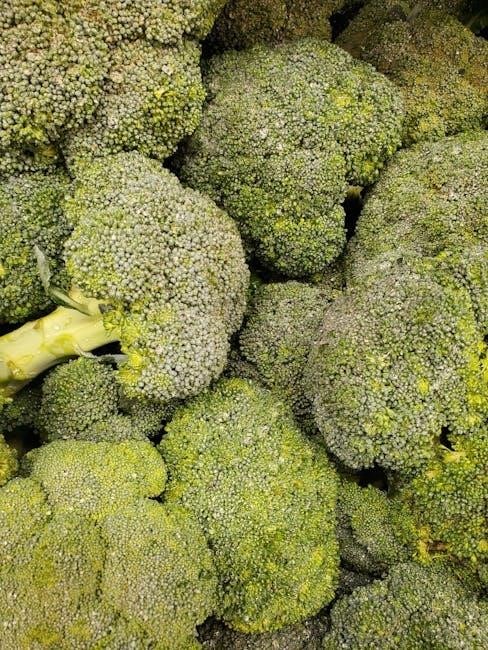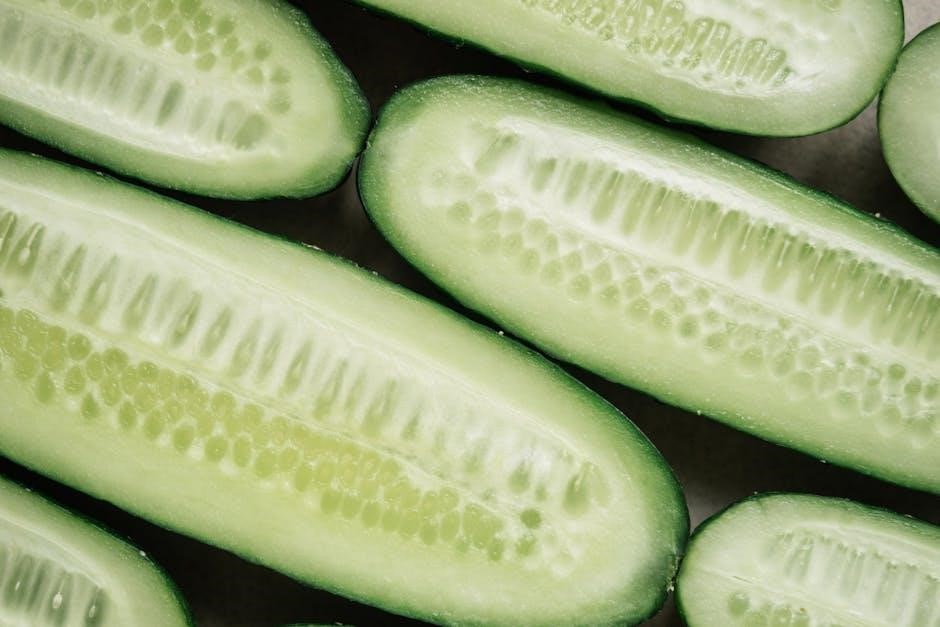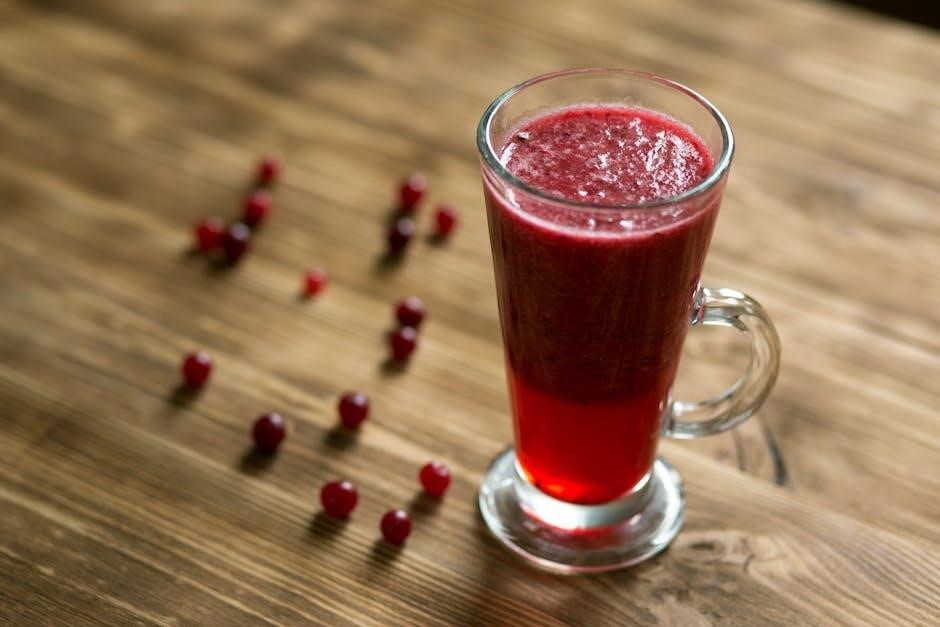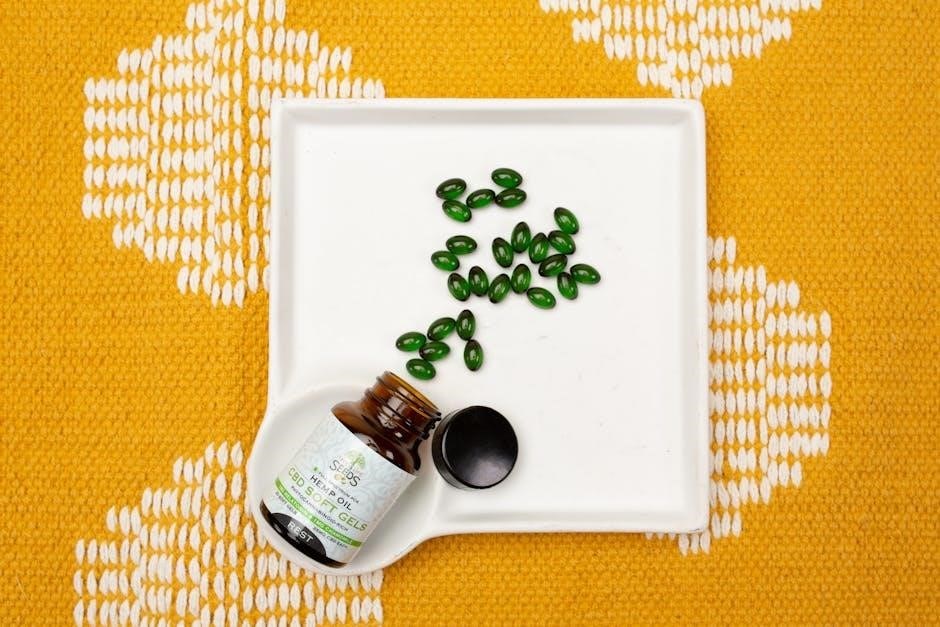Welcome to the Low Histamine Anti-Inflammatory Diet, a personalized approach to managing histamine intolerance and reducing inflammation. This diet focuses on balancing histamine levels through strategic food choices, emphasizing fresh, nutrient-rich options while avoiding triggers. It serves as a tool to identify individual tolerances and craft a sustainable eating plan, promoting long-term health and symptom relief.
1.1 Overview of Histamine Intolerance and Its Impact on Health
Histamine intolerance occurs when the body cannot effectively break down histamine, a chemical found in certain foods and produced naturally by the immune system. This imbalance often stems from impaired diamine oxidase (DAO) enzyme activity or mast cell dysfunction. Symptoms can range from mild discomfort, such as digestive issues or skin rashes, to severe reactions, including cardiovascular problems and respiratory distress. If left unmanaged, elevated histamine levels can lead to chronic inflammation, exacerbating conditions like allergies, autoimmune disorders, and mast cell activation syndrome. Understanding histamine intolerance is crucial for developing strategies to mitigate its impact on overall health and quality of life.
1.2 The Role of Diet in Managing Histamine-Related Symptoms
Diet plays a cornerstone role in managing histamine-related symptoms by identifying and avoiding triggers while emphasizing nutrient-dense, anti-inflammatory foods. By eliminating high histamine and histamine-releasing foods, individuals can reduce histamine accumulation and alleviate symptoms such as digestive issues, skin rashes, and respiratory discomfort. Fresh, whole foods are prioritized to minimize histamine formation during storage and processing. Additionally, anti-inflammatory ingredients like omega-3 fatty acids and antioxidants help mitigate inflammation, a common comorbidity with histamine intolerance. A well-crafted diet not only lessens symptom severity but also supports overall health, enabling individuals to regain control over their well-being. Consulting a healthcare professional is essential to create a personalized plan that balances histamine management with nutritional adequacy.
Benefits of a Low Histamine Anti-Inflammatory Diet
A low histamine anti-inflammatory diet reduces histamine-related symptoms, alleviates inflammation, and improves overall health. It helps manage conditions like histamine intolerance and mast cell activation syndrome effectively.
2;1 Reduction of Histamine-Related Symptoms

Adopting a low histamine diet can significantly reduce symptoms associated with histamine intolerance, such as itching, hives, digestive issues, and respiratory discomfort. By minimizing high-histamine foods and histamine-releasing substances, the body’s histamine burden decreases, leading to alleviated allergic reactions and improved overall well-being. This dietary approach is particularly beneficial for individuals with conditions like mast cell activation syndrome, where histamine spikes can trigger severe reactions. The elimination of triggers helps stabilize mast cells, reducing the frequency and severity of symptoms. Over time, this can enhance quality of life and make managing chronic conditions more manageable.
2.2 Anti-Inflammatory Effects and Overall Health Improvement
A low histamine anti-inflammatory diet not only reduces histamine-related symptoms but also promotes overall health by minimizing chronic inflammation. By eliminating high-histamine and histamine-releasing foods, the diet helps lower inflammation, which is often linked to conditions like arthritis, gut disorders, and skin issues. The emphasis on fresh, nutrient-dense foods rich in antioxidants and anti-inflammatory compounds further supports the body’s healing processes. This approach can lead to improved energy levels, better skin health, and enhanced immune function. The holistic nature of the diet also aids in balancing the gut microbiome, which is crucial for proper histamine metabolism and overall well-being. Over time, this dietary strategy fosters a healthier inflammatory response and supports long-term wellness.

Implementing the Low Histamine Diet
Transitioning to a low histamine diet involves identifying and avoiding high-histamine foods, emphasizing fresh, nutrient-rich options, and adopting proper food storage techniques to minimize histamine accumulation.
3.1 Foods to Avoid: High Histamine and Histamine-Releasing Foods
Implementing a low histamine diet requires careful avoidance of high histamine and histamine-releasing foods. These include fermented foods like sauerkraut, kimchi, and cheese, as well as aged meats, fish, and alcohol. Histamine levels tend to increase with food aging, making fresh consumption crucial. Additionally, certain foods like citrus fruits, tomatoes, and spices such as chili powder can trigger histamine release. Processed foods with additives and preservatives should also be minimized, as they may exacerbate symptoms. By eliminating these foods, individuals can reduce histamine accumulation and alleviate symptoms associated with intolerance or sensitivity. Proper food storage and preparation are essential to maintain low histamine levels in the diet.
3.2 Foods to Emphasize: Low Histamine and Anti-Inflammatory Options
Focusing on fresh, whole foods is key to a low histamine diet. Emphasize fresh vegetables like leafy greens, cucumbers, and bell peppers, as well as cruciferous vegetables such as broccoli and cauliflower. Fresh fruits, especially those low in histamine like apples, pears, and berries, are excellent choices. Opt for fresh meats, poultry, and fish, ensuring they are consumed shortly after purchase to avoid histamine buildup. Herbal teas, ginger, and turmeric are anti-inflammatory and can help balance histamine levels. Organic and pesticide-free options are recommended to minimize additional triggers. These foods not only support histamine management but also promote overall health and inflammation reduction, making them foundational to a balanced low histamine diet.
Managing Histamine Intolerance Through Diet
Managing histamine intolerance requires a diet rich in fresh, low-histamine foods like vegetables, meats, and fish, while avoiding aged or fermented items that trigger symptoms.
4.1 Understanding Histamine Accumulation and Its Effects
Histamine accumulation occurs when the body produces or ingests more histamine than it can effectively break down. Histamine is a naturally occurring chemical in foods and a neurotransmitter involved in immune responses, digestion, and inflammation. When histamine levels rise due to dietary intake or impaired enzyme function (e.g., diamine oxidase deficiency), it can lead to symptoms like itching, hives, digestive issues, and respiratory discomfort. Over time, chronic histamine elevation may exacerbate inflammation and worsen conditions like mast cell activation syndrome or histamine intolerance. Understanding this process is crucial for developing strategies to balance histamine levels through diet and lifestyle adjustments, ultimately reducing symptoms and promoting overall well-being. Fresh foods and proper storage play a key role in minimizing histamine accumulation.
4.2 The Importance of Fresh Foods and Proper Storage

Fresh foods are essential in a low histamine diet, as histamine levels increase in aging or spoiled foods. Proper storage, such as refrigerating or freezing, helps slow histamine production. Buying organic reduces pesticide exposure, which may worsen inflammation. Fresh produce, like leafy greens and certain fruits, naturally contains lower histamine and anti-inflammatory compounds, aiding symptom relief. Regularly replenishing your food supply ensures you consume items before histamine builds up. This approach minimizes potential triggers and supports overall health, aligning with the diet’s goals of reducing inflammation and managing histamine-related symptoms effectively.

Customizing Your Low Histamine Anti-Inflammatory Diet
Customizing your diet involves tailoring food choices to individual needs, monitoring symptoms, and adjusting as needed. This personalized approach helps identify triggers and ensures balanced nutrition for sustainability.
5.1 Tailoring the Diet to Individual Needs and Tolerances
Tailoring the low histamine anti-inflammatory diet involves identifying personal triggers and adjusting food choices accordingly. Start by eliminating high-histamine and histamine-releasing foods, then gradually reintroduce them to assess tolerance. This process helps pinpoint specific sensitivities and prevents overly restrictive eating. Tracking symptoms in a food diary can provide insights into how certain foods affect histamine levels. Consulting a healthcare professional ensures the diet remains balanced and nutrient-rich. Customization also considers lifestyle, preferences, and health conditions, making the diet more sustainable. By focusing on individual needs, the diet becomes a flexible tool for managing histamine intolerance and inflammation effectively, rather than a one-size-fits-all solution.
5.2 Monitoring Progress and Adjusting the Diet as Needed
Monitoring progress on the low histamine anti-inflammatory diet involves tracking symptoms, energy levels, and overall well-being. Keeping a food diary can help identify patterns and correlations between specific foods and symptoms. Regularly reassessing food tolerance is crucial, as sensitivity to histamine can change over time. Gradually reintroducing foods one at a time allows for precise identification of triggers. Adjustments should be made based on individual responses, ensuring the diet remains effective without causing unnecessary restrictions. Consulting with a healthcare provider or nutritionist can provide personalized insights and help maintain a balanced nutrient intake. Consistency and patience are key, as it may take time to notice improvements. By continuously monitoring and adapting, the diet becomes a flexible and sustainable approach to managing histamine intolerance and inflammation.
